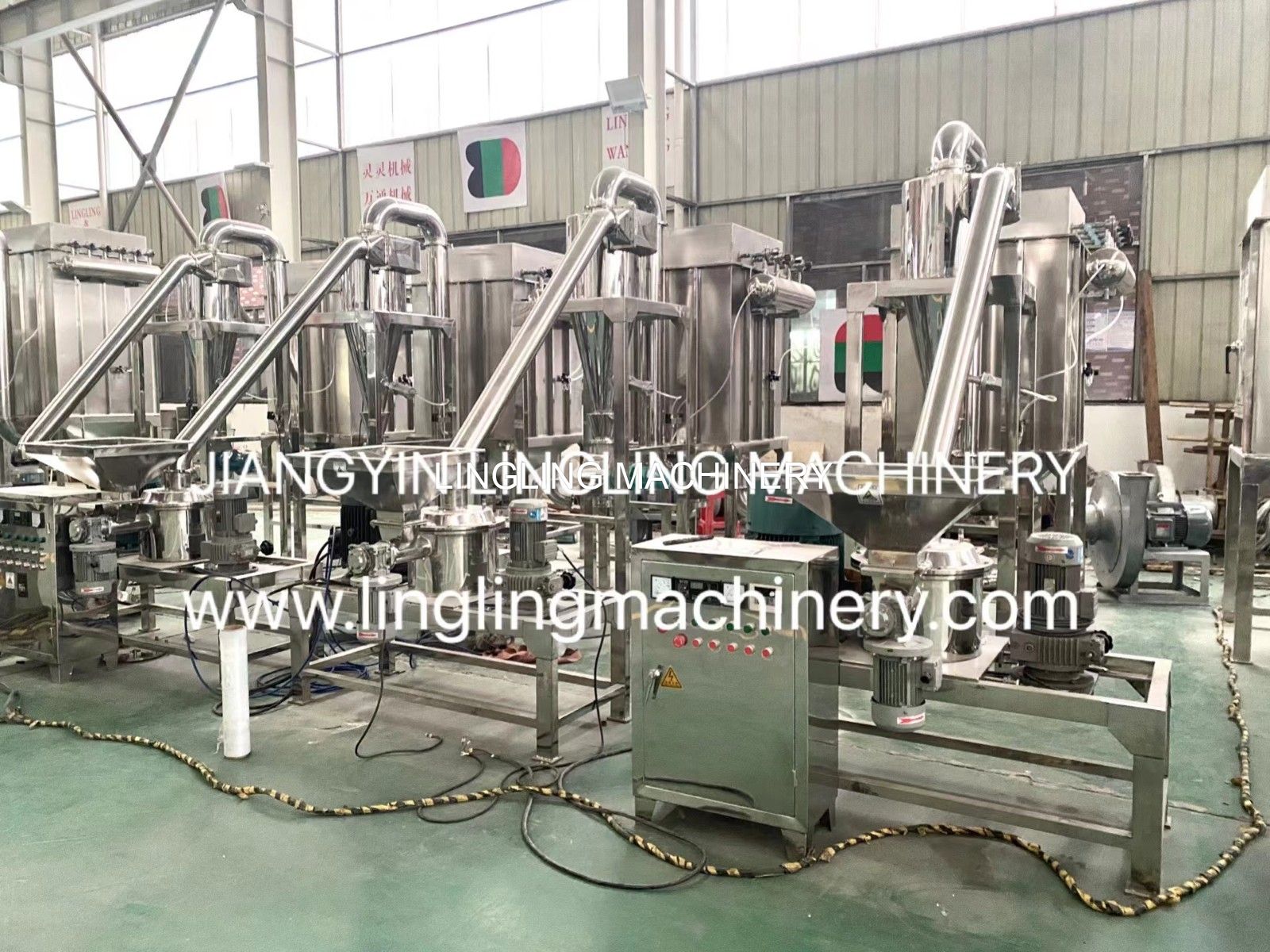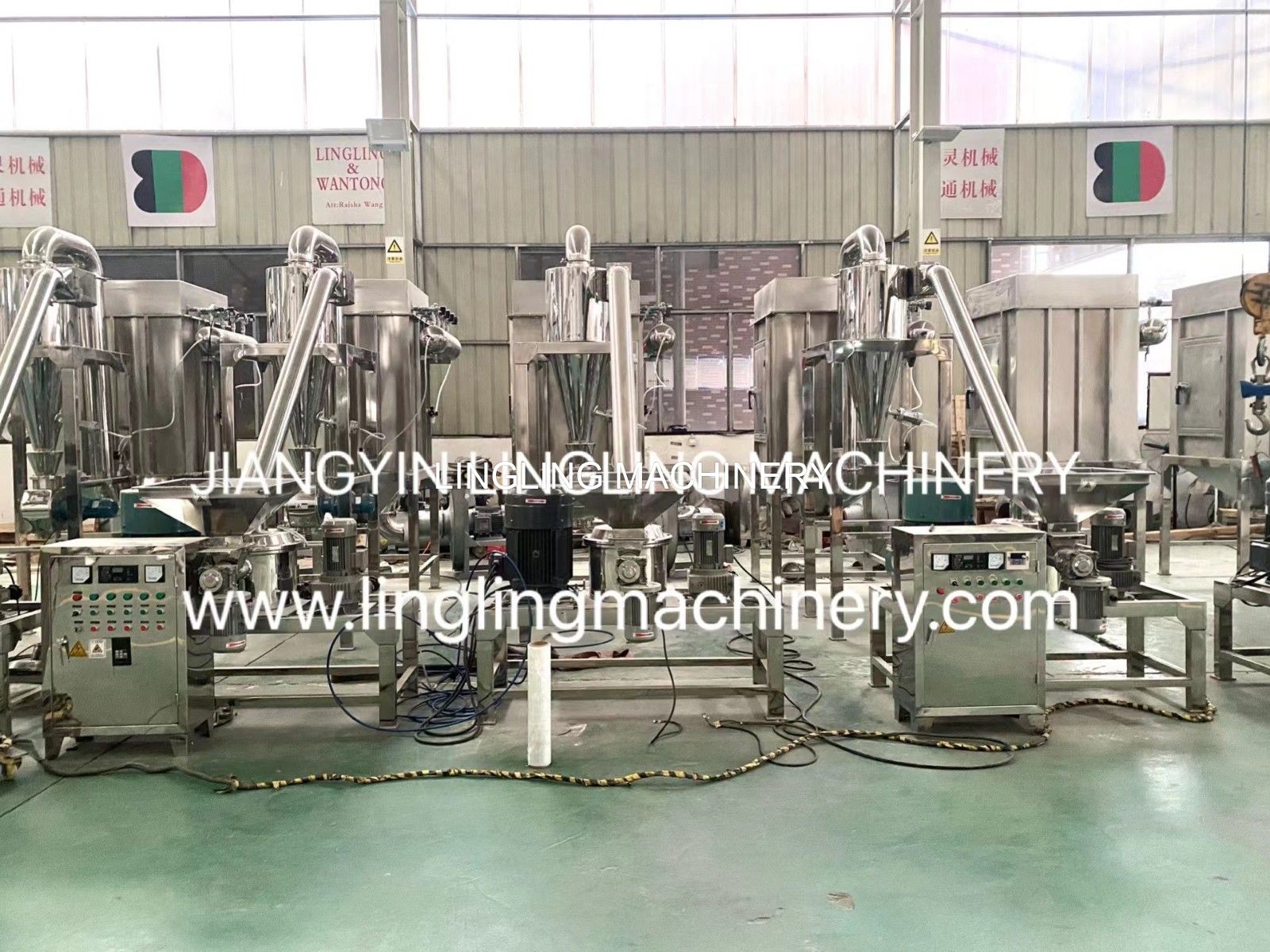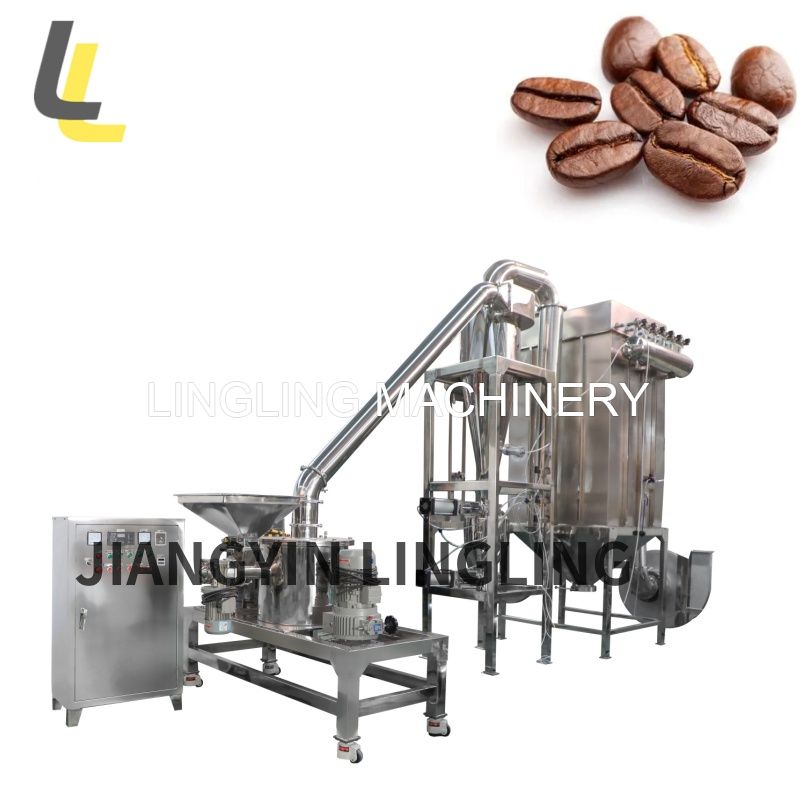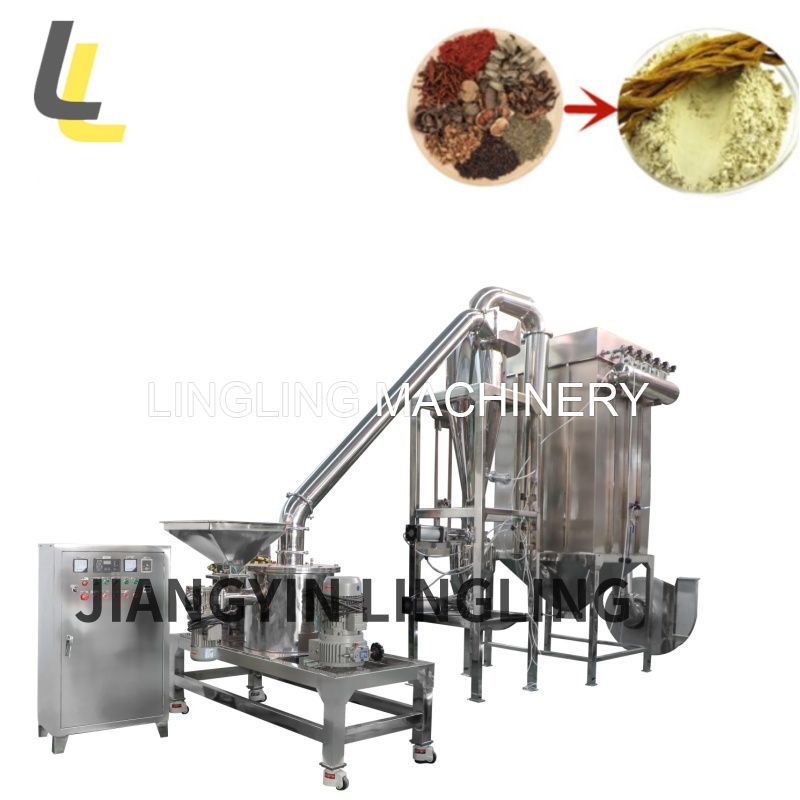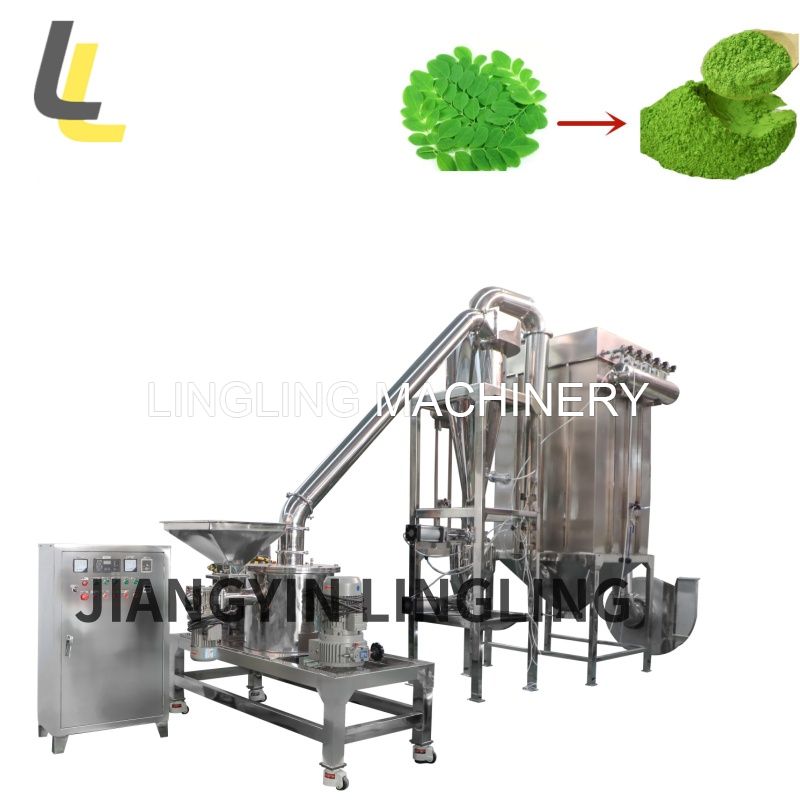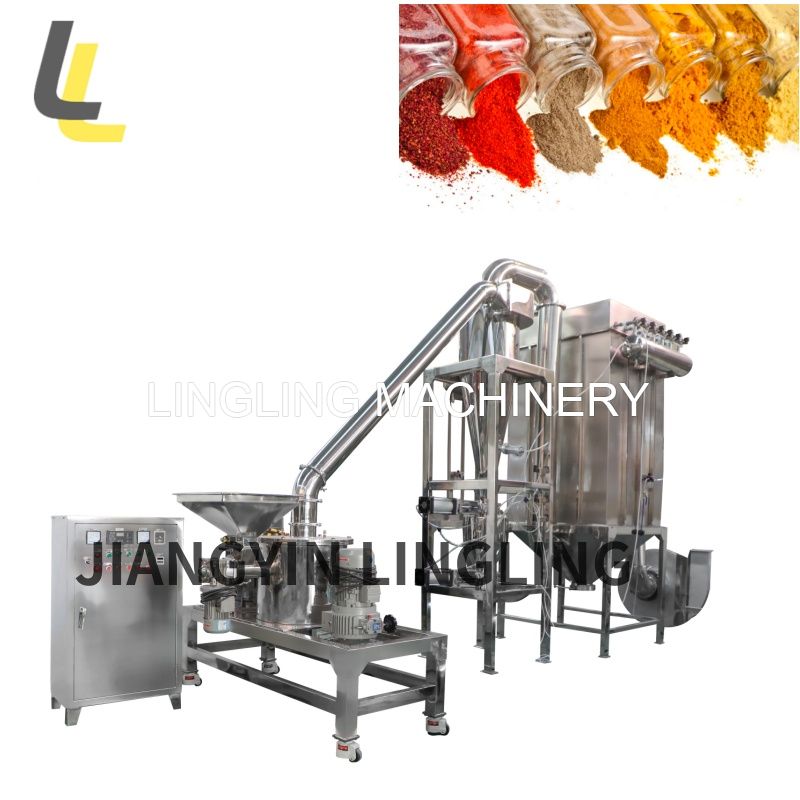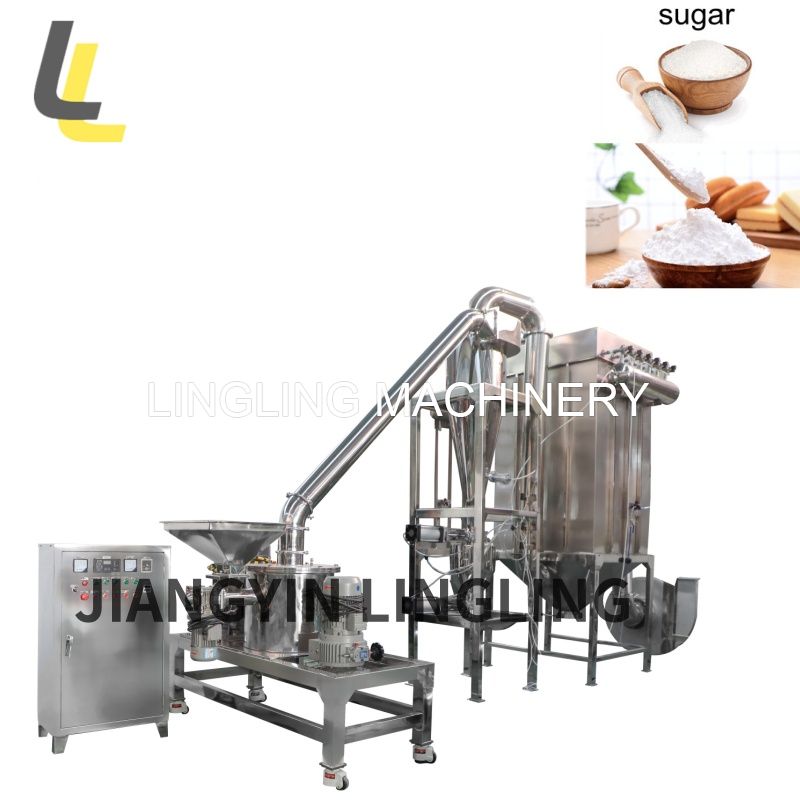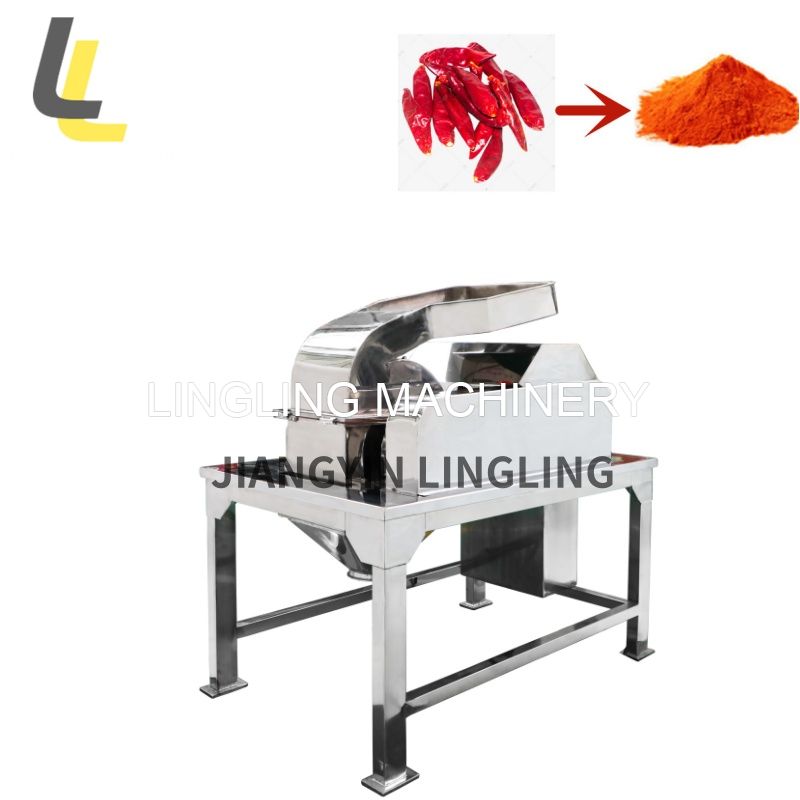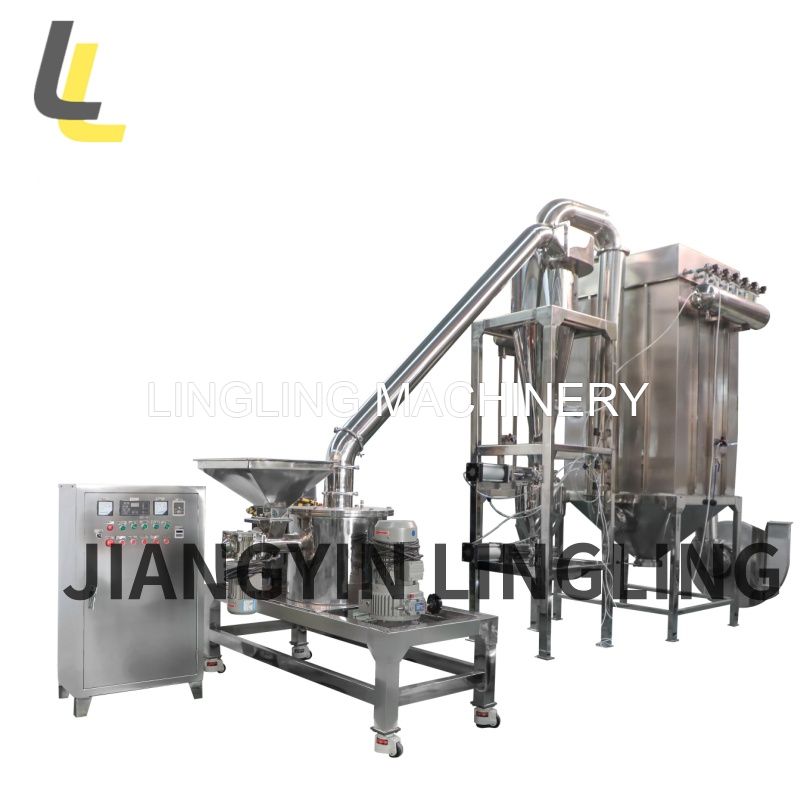The turmeric powder grinding and manufacturing apparatus is made up of three key components. The main unit undertakes the essential grinding task, which is the core process for turning raw materials into fine turmeric powder. The auxiliary device pitches in to smooth the overall running, handling supplementary jobs that keep everything flowing seamlessly. Meanwhile, the electric control box takes on the crucial duty of governing and fine-tuning all the machine's functions, ensuring precision and efficiency throughout the production of turmeric powder.
1. LL Air Classifier Mill features a simple structure, allowing for easy installation and maintenance. Its uncomplicated design makes it convenient to set up and keep in good working order. 2. The LL Air Classifier Mill incorporates advanced motors, electrical components, bearings, and operating parts from world-renowned brands. This adoption of top-notch elements ensures high performance and reliability. 3. During the production process of the LL Air Classifier Mill, no dust is emitted. Even if there is any minimal dust generated, it can be efficiently collected in the dedicated dust collecting box, keeping the working environment clean. 4. With the LL Air Classifier Mill, there's no necessity for a screen. The particle size can be flexibly adjusted simply by varying the speed. It offers a wide adjustable range of particle size, from 80 to 600 mesh, meeting diverse production needs. 5. The LL Air Classifier Mill is equipped with a water-cooling jacket surrounding the mill chamber and the bearing. This cooling mechanism effectively dissipates heat, safeguarding the machine's stable operation and prolonging its service life.
The material is transported into the grinding chamber by means of a screw conveyor. Upon arriving there, it is promptly sheared and pulverized into powder by the quickly revolving blades. Immediately afterwards, the powdered material moves through the guide ring and enters the classifier chamber. As soon as the classification wheel begins to rotate, both air force and centrifugal force come into play and act on the powder. Particles with diameters larger than the critical diameter (which refers to the diameter of the classification particles) are forcefully flung back to the grinding chamber for additional grinding, owing to their greater mass. Conversely, particles whose diameters are smaller than the critical diameter will proceed to enter the cyclone separator and the dust-collecting box.
| Model | WFJ-10 | WFJ-15 | WFJ-20 | WFJ-30 | WFJ-60 | WFJ-80 | WFJ-100 |
| Production Capacity (kg) | 10~50 | 50~100 | 80~200 | 200~400 | 400~800 | 500~1000 | 600~1200 |
| Feeding size (mm) | <5 | <10 | <10 | <12 | <12 | <12 | <12 |
| Crushing fineness (mesh) | 80-600 | ||||||
| Motor power (kw) | 12 | 13.37 | 18.37 | 42.5 | 77.5 | 96 | 138 |
| Spindle speed (rpm) | 4000 | 5800 | 4200 | 3800 | 3200 | 2800 | 2000 |
| Weight (kg) | 500 | 1000 | 1200 | 1800 | 2500 | 3000 | 4000 |
| Overall dimension (L*W*H)(mm) | 1700x1800x2200 | 4500x1250x2700 | 6000x1250x2900 | 7100x1300x3650 | 8000x2300x4500 | 8500x2500x4600 | 10000x2800x5000 |
*The above specifications are provided for reference only. We can also design and manufacture different standard upon customer's request.
